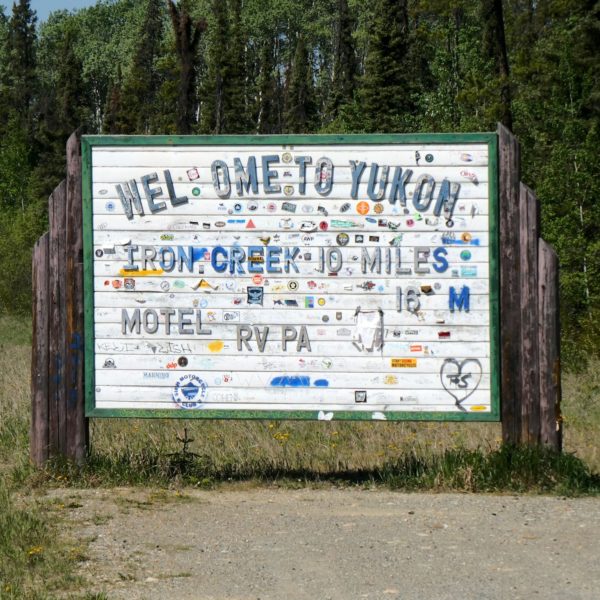
Along the Alaska Highway between Liard River, BC and Whitehorse, YT there are two small towns, a few service stops, and (as the highway crosses back and forth across the border) Welcome to British Columbia! and Welcome to Yukon! signs abound- making it no doubt the friendliest, least inhabited space we’ve ever visited. The Highway more or less follows the 60th parallel, crossing between BC and YT six times before definitively crossing into Yukon just south of Whitehorse.
We entered Yukon for the first time at Contact Creek. As with many major transportation projects – the Canadian Pacific Railroad, Transcontinental Railroad in the US, the Channel Tunnel – work crews on the Alaska Highway started at both ends and worked toward each other, connecting in September 1942 at a place known ever since as Contact Creek.
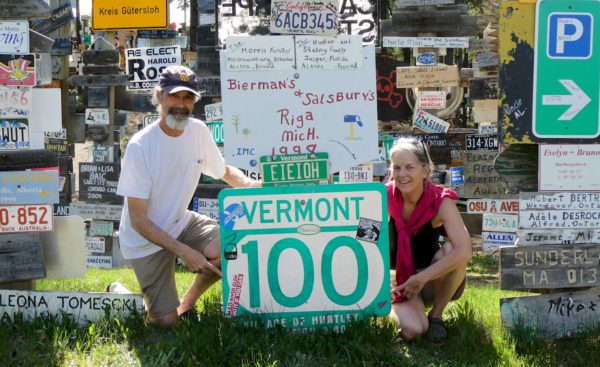
Our first stop in Yukon was in Watson Lake (pop 1,500), home of the world famous Sign Post Forest. Started by a homesick worker building the Alaska Highway who affixed a sign from home in Illinois to a tree near Watson Lake, construction workers and travelers have been adding signs ever since. At latest count, there were 88,186 signs attached throughout the ‘forest.’ And you know, there were at least 88,188 when we left! Wandering through the forest, we found a sign for Vermont Route 100, which happens to be the main road through our home town. In fact, it had already been customized with stickers from 3 Mad River Valley businesses. We just happened to have Sugarbush and Mad River Glen stickers on board with us so we were happily able to enhance the Mad River Valley’s presence in the famed Sign Post Forest.
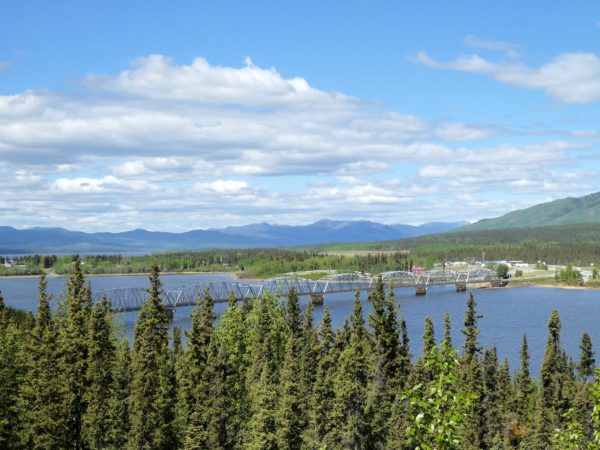
The view dropping into Teslin (pop 450) at the confluence of the Nisutlin River and Teslin Lake is beautiful! The Nisutlin Bay Bridge (bridge!) crosses the bay formed by the Nisutlin River leading to a small First Nation village with homes dotting the shores. The community includes a large population of inland Tlingit residents who continue to follow a mostly traditional lifestyle focused on the river with fishing, trapping, hunting and boating. George Johnston, of Tinglit descent, was a long-time resident, trapper, entrepreneur, photographer and character in the town. The local museum houses a huge collection of his beautiful black and white photographs along with his original black 1928 Chevrolet. Despite no roads in Teslin in 1928, George achieved his dream of owning a car. He purchased the car in Whitehorse, brought it to Teslin on a barge, and drove it mostly up and down the frozen rivers in the winter.
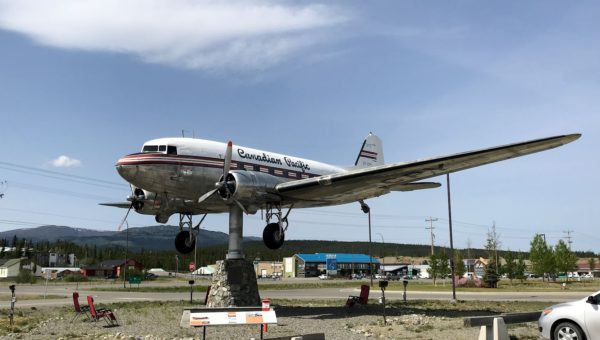
Whitehorse is well known among Alaska Highway travelers as a major provisioning and R&R stop. With a population of nearly 27,000, it’s the capital and largest (ok, only) city in Yukon. We did spend a couple days in Whitehorse, provisioning – laundry, shopping, long showers, and, long overdue, washing the truck! We also had to spend time checking out this urban oasis in the midst of remoteness.
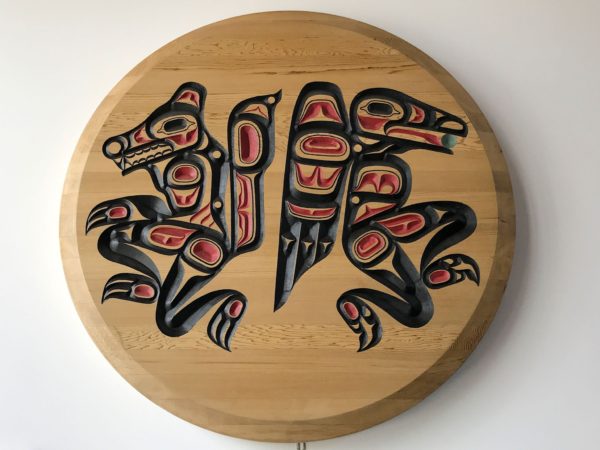
Whitehorse has a colorful history centered around the First Nation communities, the Klondike gold rush, and the building of the Alaska Highway. The headwaters of the Yukon River (above Whitehorse) was the traditional territory of the Kwanlin Dun First Nation people. The original residents were pushed out in 1900 during the gold rush. Resettled into a reservation near Whitehorse, they had begun to integrate into the community, trading furs and taking jobs. Then they were suddenly again crowded out when 10,000 workers arrived to work on the Alaska Highway. After decades of negotiation with the Canadian federal government, in 2005 the Kwanlin Dun First Nation finally reached agreement to become a self-governing First Nation on their own land near Whitehorse.
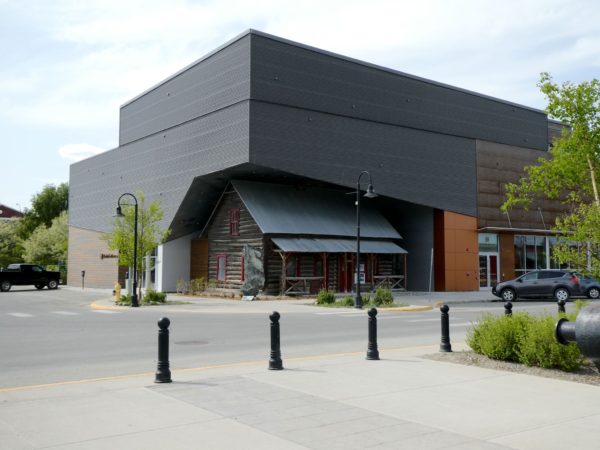
What? 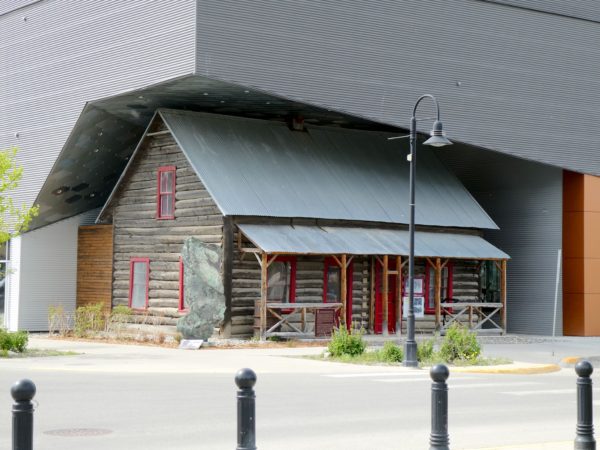
Oh, the MacBride Museum…
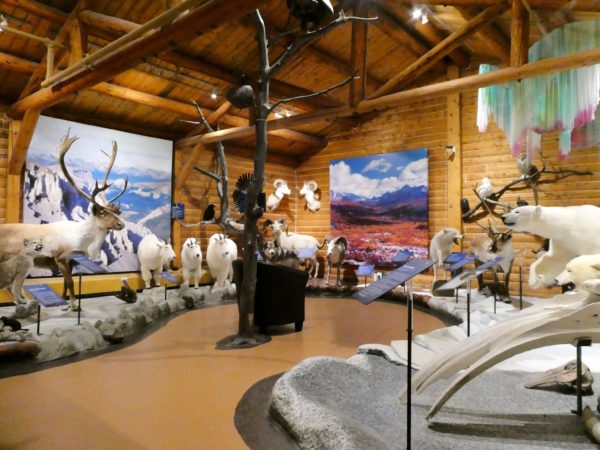
A relatively enormous, modern-looking building on 2nd Street that seemed to be swallowing a tiny log cabin caught our attention, so we checked it out. The MacBride Museum of Yukon History was beautifully curated featuring exhibits and artifacts regarding First Nations, the construction of the Alaska Highway, the Klondike gold rush, and the original telegraph communications office in the original log cabin, perfectly integrated into (not actually swallowed by) the museum. We loved the entire museum, though it was tough to get great pix of the fascinating artifacts and old photos – on the other hand, the stuffed animals in the wilderness exhibit totally hammed it up for the camera!
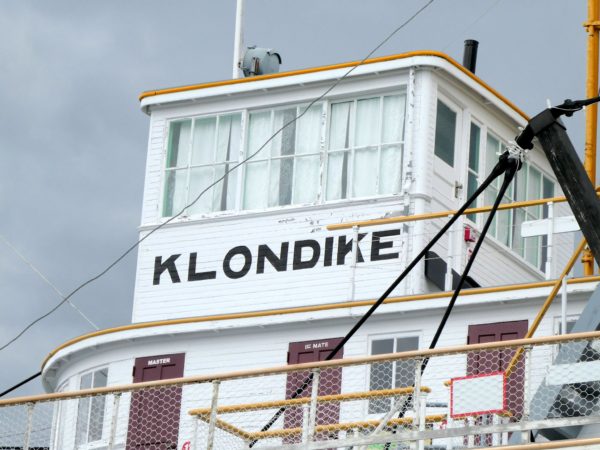

Paddle wheel 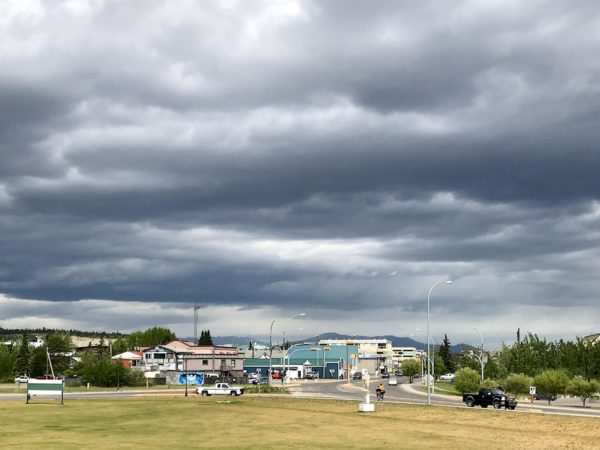
View of downtown from the Klondike
The SS Klondike II greets visitors from where it sits in retirement along the Yukon River in downtown Whitehorse. Custom built in 1937 to carry heavy cargo and passengers up and down the fast, long, wide, shallow, and treacherous Yukon River, the stern paddle-wheeler traveled between Whitehorse and Dawson City until 1950. The Klondike brought passengers both ways along the river, as well as goods and supplies downriver on the way north to Dawson City, and it brought ore from the mines around Dawson City and along the way upriver to Whitehorse for further shipment by train. The trip downriver to Dawson City took 1-2 days while the return took 3-4 days.
Just for fun… The Yukon River is 3520 km (2200 miles) long, the 4th longest in the world. It starts about 300 km (200 miles) from the Pacific in British Columbia, winds its way north through the Yukon and Alaska, emptying into the Bering Sea.
We’re about two thirds of the way along the Alaska Highway…
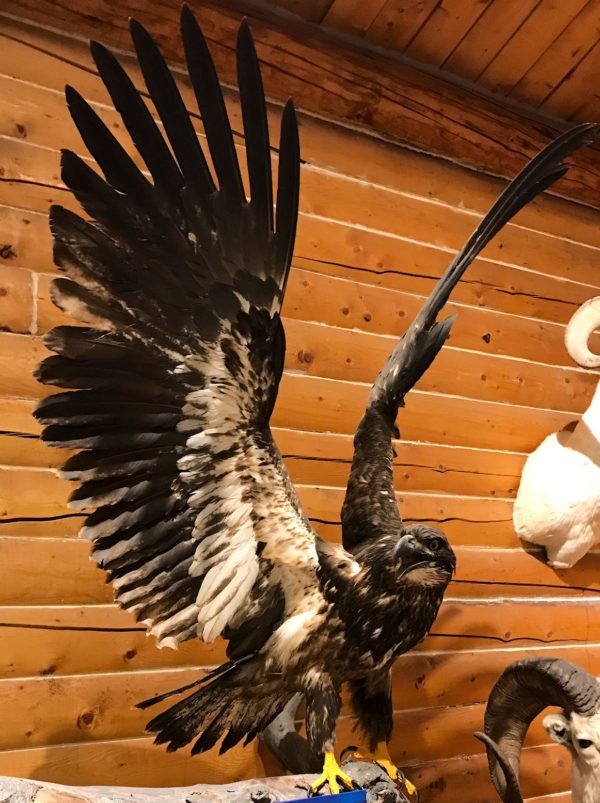
For anyone who’s interested, more border crossing, Teslin, Whitehorse, Whitehorse camp, MacBride Museum of Yukon History, SS Klondinke pix…

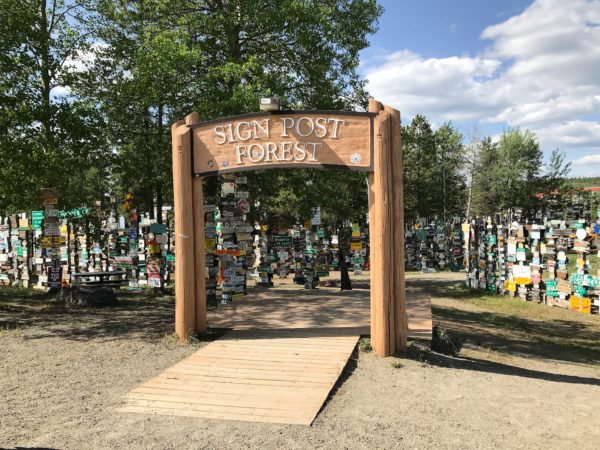
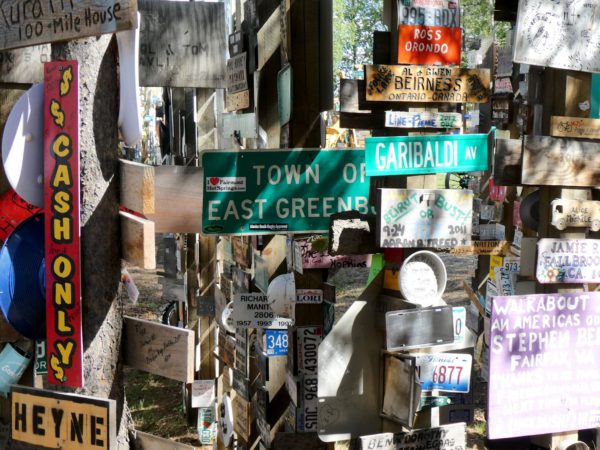
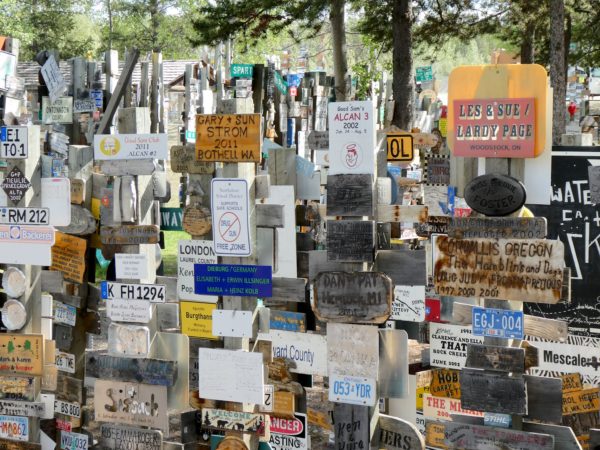
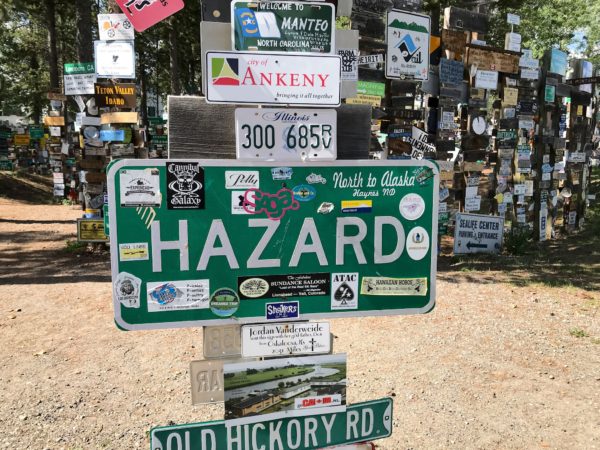
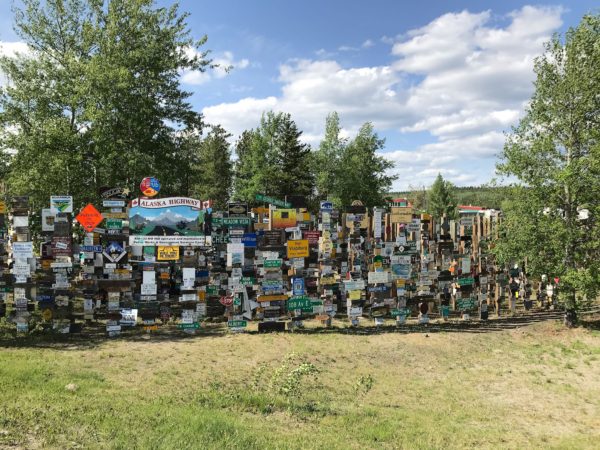
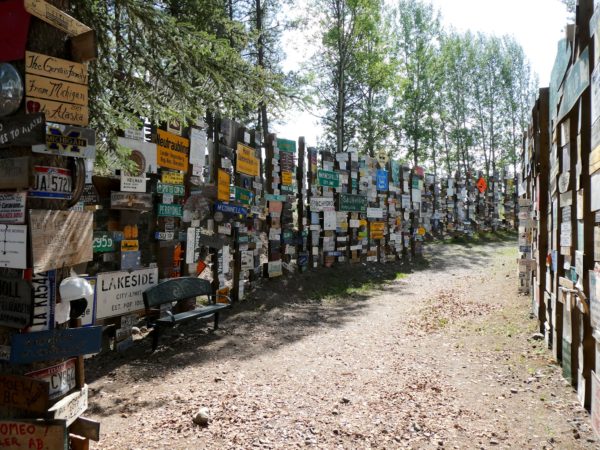
Hope you are enjoying the journey. Glad you were able to add some local flare to the sign post forest. The way you are traveling you will need to put both racing stripes and numbers on the side of the rig. Maybe make it back for some Thunder Road action. Have fun! Miss you guys.
Thanks, Milo & Patti! Stripes we have – they’re not in great shape any more, but they’ll do for now. Thinking of adopting 42 as our number.